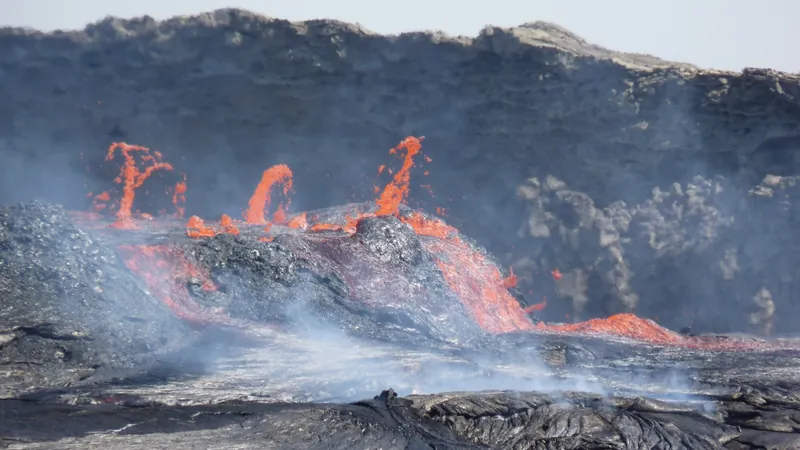
Unlocking the Cosmos: How One Astrophysicist is Inspiring Future Generations in STEM
2025-05-30
Author: Wei
Bridging Art and Science to Illuminate Cultural Connections
In a powerful intersection of culture and science, UC Santa Cruz astrophysicist Dr. Nia Imara is using art to connect Black and brown youth with STEM (Science, Technology, Engineering, and Mathematics) fields. Her recent book, *Painting the Cosmos*, starts with a vivid reflection on the ancestral practices of enslaved West Africans who honored their dead through rhythmic dance and song, reminding us of the enduring ties between humanity and the cosmos.
Honoring Diversity in Science
Imara’s work highlights the rich contributions of diverse communities to scientific understanding. She emphasizes that textbooks often prioritize the achievements of white scientists, neglecting the pivotal roles played by individuals from marginalized backgrounds. “Science is a human endeavor,” she asserts, reminding us that astronomical knowledge is a global legacy, with insights from cultures worldwide.
The Importance of Representation
Fueled by her passion for fostering representation in science, Imara founded the non-profit Onaketa in 2020. This initiative offers free online STEM tutoring for Black and brown youth, connecting them with scientists of color who serve as mentors. Imara understands that seeing someone who looks like them in these roles can inspire students and open doors to new possibilities.
Nature’s Diversity as a Metaphor for Society
Imara’s book explores the diversity within our solar system, likening the unique characteristics of planets to the necessity of diverse perspectives in human society. She explains, “If you change any one of these eight planets, that would have serious implications for life on Earth.” Through her insights, she urges us to embrace diversity as a crucial element for harmony on our planet.
From Questions to Careers: A Personal Journey
Imara’s journey began with profound existential questions that drew her to astronomy. Although she once believed that science could answer all life’s mysteries, she now appreciates its role in highlighting the interconnectedness of humanity. This realization fueled her desire to merge art with science, demonstrating that both fields can complement each other effectively.
Encouraging the Next Generation of Scientists
Through Onaketa, Imara employs a hands-on approach to education that delves into the unique challenges faced by Black and brown students in the STEM fields. Each year, middle and high school students are paired with dedicated mentors like Chima McGruder, an astrophysicist who highlights the importance of role models. He points out the stark disparities in representation, where Latino and Black workers remain vastly underrepresented in STEM careers.
A Vision for Change
Imara’s mission transcends mere education; it’s about instilling hope and possibilities in students who have been historically underserved. “We are putting attention, resources, and love toward people who have been actively disconnected from these fields,” she explains, aiming to empower future generations through knowledge and creativity.
Reflection on the Sun’s Legacy
In her book, Imara concludes with a poetic reminder that everything we see is a reflection of the sun’s light, paralleling the cycles of existence in both nature and life. As she eloquently states, ‘Life occurs in cycles—rhythms,’ highlighting the importance of resilience in the face of adversity. This profound understanding of interconnectedness, both in science and humanity, leaves readers inspired to seek knowledge and uplift the voices of all.



 Brasil (PT)
Brasil (PT)
 Canada (EN)
Canada (EN)
 Chile (ES)
Chile (ES)
 Česko (CS)
Česko (CS)
 대한민국 (KO)
대한민국 (KO)
 España (ES)
España (ES)
 France (FR)
France (FR)
 Hong Kong (EN)
Hong Kong (EN)
 Italia (IT)
Italia (IT)
 日本 (JA)
日本 (JA)
 Magyarország (HU)
Magyarország (HU)
 Norge (NO)
Norge (NO)
 Polska (PL)
Polska (PL)
 Schweiz (DE)
Schweiz (DE)
 Singapore (EN)
Singapore (EN)
 Sverige (SV)
Sverige (SV)
 Suomi (FI)
Suomi (FI)
 Türkiye (TR)
Türkiye (TR)
 الإمارات العربية المتحدة (AR)
الإمارات العربية المتحدة (AR)